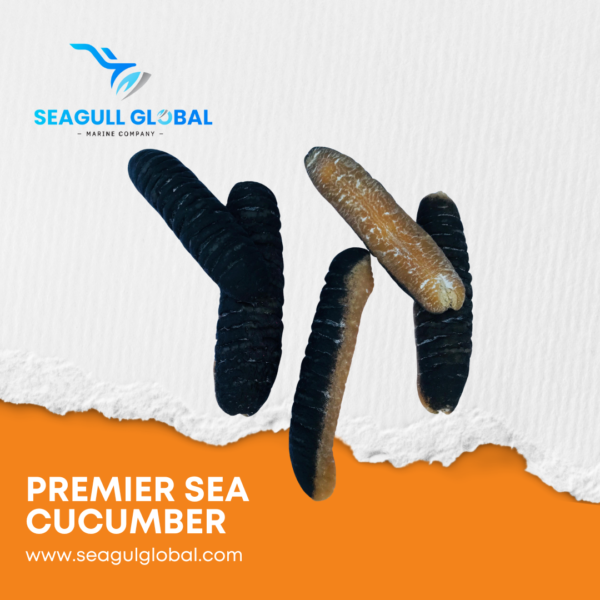Sandfish Sea Cucumber
- Home
- Shop
- Sandfish Variety Sea Cucumbers
- Sandfish Sea Cucumber












Sandfish Sea Cucumber
$170.00 – $250.00
The Sandfish Sea Cucumber (Holothuria scabra), also known as the sandfish or trepang, is a marine invertebrate belonging to the class Holothuroidea. It is commonly found in shallow tropical waters of the Indo-Pacific region, particularly in sandy or muddy substrates near seagrass beds and coral reefs. The sandfish sea cucumber plays a crucial ecological role by recycling nutrients and maintaining sediment health. It is also valued in the culinary and medicinal industries, particularly in Asia, where it is harvested for its nutritional and purported health benefits.
If you love this product and wish for a customized quote contact us at sales@seagulglobal.com or
+971 56 9 279 657 we will be happy to provide you with more info!
- Description
- Additional information
- Reviews (0)
Description
Introduction to the Sandfish
The sandfish, also known as the Scincus scincus, is a fascinating species of lizard renowned for its unique ability to ‘swim’ through the sand. This remarkable reptile is native to the deserts of North Africa and the Middle East, where it has adapted to thrive in harsh, arid environments.
Physical Characteristics
The sandfish is characterized by its smooth, streamlined body, which enables it to move effortlessly through the sand. It typically grows to a length of approximately 15-20 centimeters. Its scales are finely textured, reducing friction and allowing for efficient sand movement. The coloration of the sandfish is generally a pale yellow or light brown, providing effective camouflage against the desert landscape.
Behavior and Adaptations
One of the most intriguing behaviors of the sandfish is its ability to ‘dive’ into the sand to avoid predators and extreme temperatures. This is possible due to its specialized limbs and body structure. The sandfish’s legs are short and strong, equipped with fringed toes that act like paddles, allowing it to ‘swim’ through the sand with ease. Additionally, the sandfish has evolved to reduce water loss and can survive long periods without hydration, making it perfectly suited to desert life.
Diet and Feeding Habits
The diet of the sandfish primarily consists of small insects and other invertebrates. It uses its keen sense of smell to locate prey beneath the sand’s surface. Once it detects food, the sandfish will quickly burrow and capture its meal with precision. This efficient hunting strategy ensures that the sandfish remains well-nourished even in its sparse desert habitat.
Additional information
| Weight | 1 kg |
|---|---|
| Quantity Per 01 kg | 15-20, 25-30, 45-50, 65-70, 85-90, 110-115, 160-165 |


Reviews
There are no reviews yet.